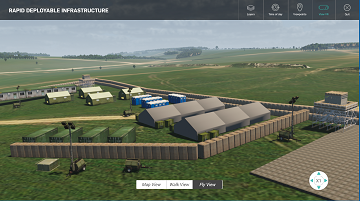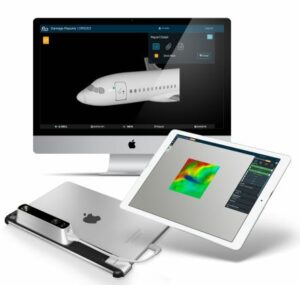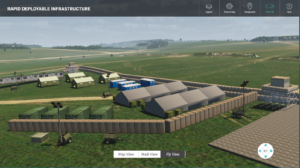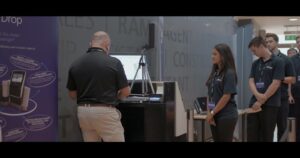
On Thursday ADS member Atkins held a press event in London to showcase their technologies in the aerospace, defence and security sectors.
Aerospace – Flo

Flo is a digital asset damage assessment system, designed to expedite the process of analysing and fixing any damage undertaken by parts of the asset, including aircraft, either during manufacture or maintenance.
At the moment the way things work if there’s damage on an aircraft is an engineer will have to go to where the aircraft is and fill out a physical form, take photos etc, these are then taken to a team off-site who will then inspect the damage although this is difficult as they may not be able to properly grasp the dimensions of the damage.
By taking out the human aspect with Flo, the aim is to avoid these problems – saving time and money. Flo sends the information via a live stream to the people who decide what to do with the damage, they can also see dimensions of the damage and where it lies on a model of the aircraft.
This damage will be marked and tracked as part of a log which will accumulate with all reports of damage the aircraft has. This then allows the engineers to spot if there are any trends in damage, for example if damage is clustered in one area.
Defence – RAPID

RAPID is a web-based deployable defence infrastructure design and decision support tool. In complex environments such as operational infrastructure, those in the defence sector need to design and deploy rapidly temporary infrastructure to support the construction of fixed infrastructure as well as logistical and operational activities such as military operations and humanitarian assistance and disaster relief.
RAPID enables users to plan, assess, review and decide on infrastructure plans in complex environments in both 2D and 3D, enabling optimisation of cost, time, use of resources, environmental impact, safety and security.
Security – Facial Recognition and Secure by Design

On display for the security sector was the Passenger Authentication Scanning System (PASS) 2 designed for Heathrow Airport to keep air travel and its passengers secure. It’s currently used, as most of us will have experienced, when going through departures at airports. They’re now looking at how this can be applied across other aspects in the airport to make processes even more secure and increase efficiency.
One possible application is through the technology’s use in boarding, with the technology enabling a self-boarding process where your face is matched with your identity and cross referenced with your boarding pass, opening the gates and allowing you to board, whilst ensuring the correct passenger has boarded the plane.
Another piece of equipment on display is used for what can be called ‘ethical hacking’. Training those working in cyber security how to hack so they can reverse engineer it and make their own systems more secure, and less susceptible to hacking.
Atkins currently teach people how to make systems more secure through the Cyber Security Academy. However, they believe things need to be ‘secure by design’, making equipment, systems and buildings secure from the get-go, rather than after the fact.





